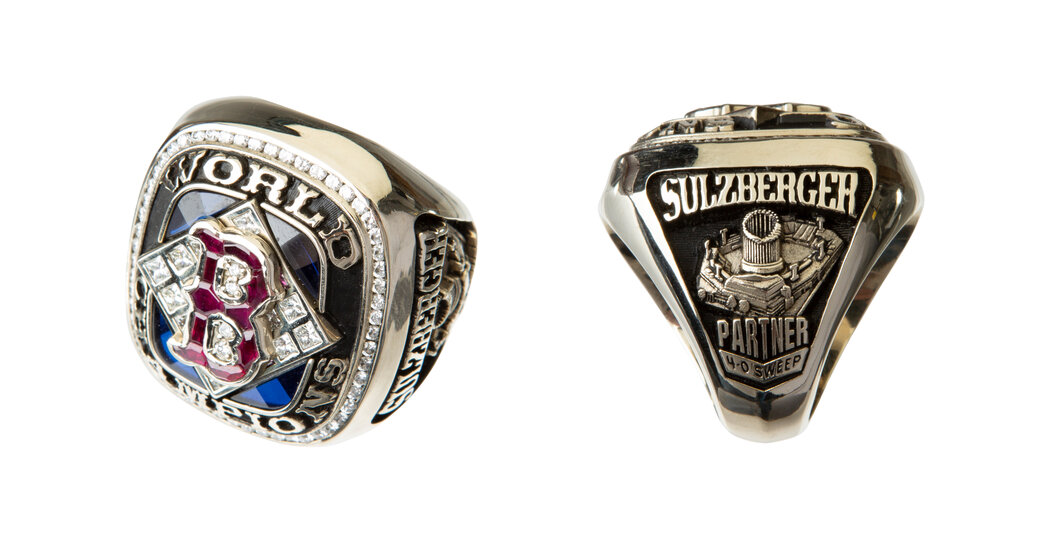
Even today, Boston Red Sox fans would recognize the names inscribed on the bejeweled 2004 World Series rings: Damon. Francona. Martínez. Ortiz. Ramirez. Schilling. Sulzberger. Varitek.
Wait. Sulzberger?
Yes, that would be Arthur Sulzberger Jr., the former publisher of The New York Times and chairman of The New York Times Company. He and other Times executives received rings because the Times Company then held a 17.75 percent stake in Fenway Sports Group, owner of the Red Sox.
Mr. Sulzberger, who stepped down as publisher in 2017, donated his ring to the Museum at The Times. Today, it astonishes visitors — and not always in a nice way. Many New Yorkers still resent the Yankees’ loss to the Red Sox in the 2004 American League Championship Series. (Bostonians felt nothing but vindication.) The Red Sox went on to sweep the World Series against the St. Louis Cardinals for their first championship in 86 years.
To celebrate, the team ordered more than 500 rings from Jostens of Minneapolis. In an 18-karat gold setting, 10 rubies form the Red Sox “B,” notable for its spurs, that overlays a diamond-studded baseball diamond on a bed of synthetic sapphires, and is surrounded by the words World Champions. On the right side of the ring is the recipient’s surname.
The value of any World Series ring depends on whose finger it has weighed down. The 2004 ring presented to Johnny Pesky, a celebrated figure in Red Sox history, was auctioned for $69,000 in 2014. But the ring presented to Jobel Jiménez, a coach and scout, fetched only $13,200 this year. Who knows what Mr. Sulzberger’s ring would be worth?
In 2001, the Times Company was part of a group headed by John W. Henry that successfully bid $660 million for the Red Sox, Fenway Park and 80 percent of the New England Sports Network. NESN was what interested The Times, which then owned The Boston Globe. The Times Company planned to entice regional advertisers through “Globe-branded sports programming,” Janet L. Robinson, the senior vice president for newspaper operations, said at the time. She said neither The Globe nor The Times would “be involved in operating the ball club.”
After it reversed course to concentrate more fully on The Times alone, the company sold pieces of the Fenway group in 2010, 2011 and 2012. Finally, in 2013, it sold The Globe to Mr. Henry. But the bling stayed put.
The In Times Past column explores New York Times history through artifacts.

